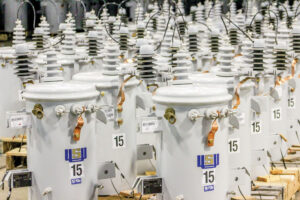
With a 5-4 vote the Supreme Court on Feb. 9 issued a one-page order temporarily blocking the EPA’s Clean Power Plan from taking effect until legal challenges are resolved. The decision indicates a majority of the judges felt that denying the request for a stay would cause irreparable harm to the 29 states requesting the stay, and that there is a fair prospect the court might strike down the rule.
States are required to file a plan to meet the Clean Power Plan requirements by September or request an extension. Electric cooperatives, and others in the industry, were already seeing many base-load power plants shutting down before they would normally have been retired in anticipation of the Clean Power Plan’s new regulations.
This created a situation that would be like tearing down a 25-year-old house before the 30-year mortgage was paid off, and then having to build a new house to live in. Those petitioning the Supreme Court argued that electricity providers would need to start spending billions of dollars now in order to comply with a regulation that might be overturned.
The National Rural Electric Cooperative Association (NRECA) estimated the compliance for electric co-ops alone would be as much as $28 billion. NRECA has said that while the rule’s emission reduction requirements don’t kick in for several years, co-ops must start taking immediate costly and irreversible steps to meet the EPA’s requirements. The co-ops’ concern is for affordability and reliability of the nation’s power supply.
“Charging ahead with implementation of the Clean Power Plan would have caused immediate and irreparable harm to America’s electric co-ops,” said NRECA Interim CEO Jeffrey Connor. “The EPA itself predicts the closure or curtailment this year of many coal-fired power plants that would remain online absent the rule. As not-for-profit utilities serving 93 percent of America’s persistent poverty counties, electric co-ops are especially concerned about the significant electric rate increases this would impose on some of our nation’s most vulnerable citizens.”
Connor said electric cooperatives are also concerned about reliability, and asked for a “safety valve” in the rule that would allow for extremes in weather and other power supply reliability issues. Although the EPA inserted a safety valve in the final rule, it did so without opportunity for public comment and resulted in an unworkable rule for those responsible for keeping the lights on.
Connor said that co-ops recognize that smart federal energy policies can be both affordable and effective. He said, “We have partnered with the administration on efforts to accelerate development and deployment of solar technologies and lead the industry in community solar. Co-ops already own or purchase about 16.5 gigawatts of renewable energy capacity, with plans to add more in the pipeline. We have a similar track record on energy efficiency, which co-ops traditionally have promoted as a way to keep members’ bills low. Nationally, 82 percent of electric co-ops offer some type of efficiency program.”
Everyone predicted the new regulation would result in a long legal battle. The Supreme Court was petitioned on Jan. 27 to stay the Clean Power Plan after a federal appeals court rejected pleas to halt the rule. The federal appeals court is scheduled to take up arguments on the case in June. Ultimately the Clean Power Plan is on hold until the Supreme Court either takes up the case and issues a final decision, or denies a request to hear an appeal. That means a final resolution might not come until 2017.









